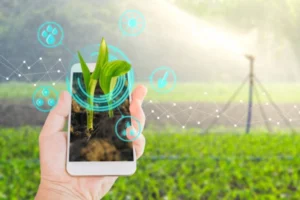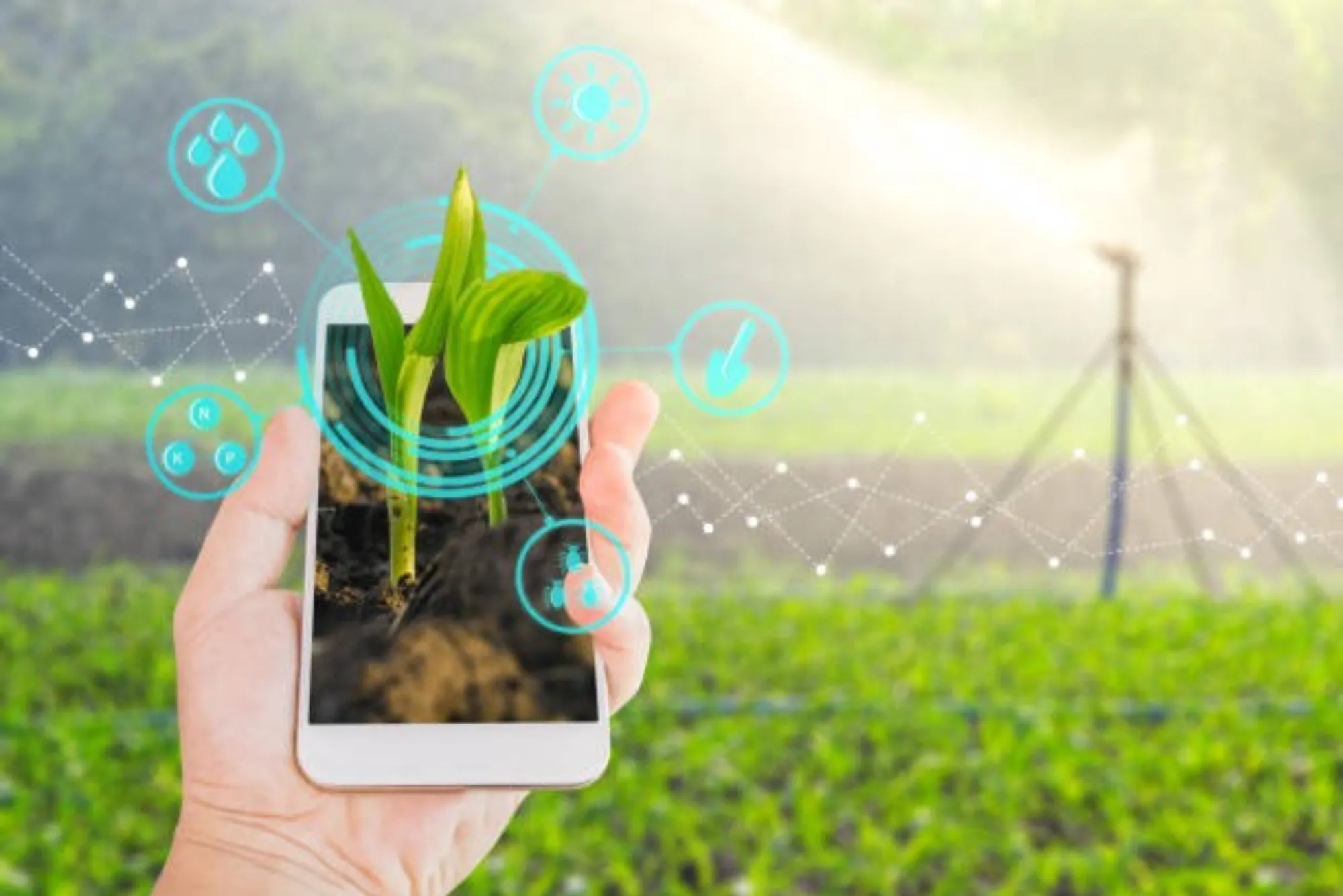Smart farming is redefining how farmers plan, grow, and harvest crops. By blending data analytics, AI, IoT sensors, and precision software, agriculture is becoming smarter and more profitable. In regions like Pakistan, India, and Southeast Asia, these technologies are vital for food security and sustainability amid changing climates.
From real-time soil monitoring to AI-based crop yield forecasting, farmers are now leveraging digital tools to improve productivity and minimize waste.
. What Is Smart Farming?
Quick Answer:
Smart farming uses data-driven technologies—like AI, IoT, and satellite imagery—to optimize agricultural operations for maximum yield and sustainability.
Smart farming represents the next agricultural revolution. It involves using digital tools and connected devices to make decisions based on real-time data. Instead of relying on traditional guesswork, farmers use sensor-based monitoring, remote mapping, and AI analytics to guide every stage of farming—from soil preparation to harvesting.
Key components include:
IoT sensors for soil moisture and weather tracking
Drones for field imaging and crop health monitoring
AI-driven crop management software
Blockchain for traceable food supply chains
. The Role of Data Analytics in Agriculture
Quick Answer:
Data analytics transforms raw farm data into actionable insights, helping farmers predict outcomes and plan resource use more efficiently.
With digital transformation sweeping across agriculture, data analytics is now a must-have tool for modern farmers. It enables better decision-making by analyzing factors like rainfall, temperature, and soil pH levels.
For instance, in Punjab’s smart agriculture projects, data-driven irrigation systems have improved water efficiency by over 25%. Similar initiatives in Australia and the Netherlands are using big data to optimize fertilizer use and crop rotation patterns.
. Why Crop Yield Estimation Is the Heart of Smart Farming
Quick Answer:
Accurate crop yield estimation helps farmers forecast production, minimize waste, and plan better for market demand.
One of the core components of smart agriculture is crop yield estimation. Farmers now use tools like the crop yield estimation calculator to forecast how much they can produce based on soil, seed type, and climatic conditions.
This digital approach eliminates uncertainty and enables precision-based decisions—helping reduce input costs and increase profitability. For example, India’s AgriStack initiative promotes digital farming data integration to assist in accurate yield predictions across states.
Integration of AI and Machine Learning in Farming
Quick Answer:
AI and ML analyze massive data sets to identify hidden patterns, predict yields, and automate farming operations.
Machine learning algorithms are now capable of identifying pest threats or nutrient deficiencies through image recognition. AI-based tools also support predictive modeling, which helps farmers understand what crop will perform best in the upcoming season.
A study by FAO (Food and Agriculture Organization) reports that smart AI farming could boost crop productivity by up to 30% in developing countries over the next decade.
Smart Irrigation Systems and Water Management
Quick Answer:
Smart irrigation systems use real-time weather and soil data to deliver just the right amount of water when needed.
Countries like Pakistan, where water scarcity is a growing challenge, are investing in IoT-based irrigation systems. The Punjab Irrigation Department’s Water Conservation Program uses digital monitoring to cut water waste and ensure equitable distribution.
Smart irrigation helps farmers reduce electricity costs and improves soil health by preventing overwatering.
. Role of Government and Youth in Smart Agriculture
Quick Answer:
Government programs and youth-led innovation hubs are key to scaling smart agriculture technology in developing regions.
In Pakistan, the Prime Minister’s Youth in Agriculture Program encourages graduates to create agritech startups focusing on automation and digital farming solutions. Similarly, India’s Digital Agriculture Mission (2021–2025) promotes innovation through public-private partnerships.
These initiatives empower young developers, data scientists, and entrepreneurs to design mobile apps and AI models for farming—bridging the gap between tech and agriculture.
. The Rise of Digital Platforms and Free Tools for Farmers
Quick Answer:
Free online calculators and tools simplify complex agricultural decisions and improve access to digital farming resources.
Digital platforms offering free online calculators for everyday use are helping farmers, agronomists, and researchers calculate values such as irrigation needs, soil fertility, and yield estimates.
These tools reduce dependency on manual calculations, saving time and improving decision accuracy. When integrated with mobile apps, they also allow real-time field updates—empowering even small-scale farmers in rural communities.
. Smart Farming Success Stories Around the World
Quick Answer:
Smart farming success is seen worldwide, from Asia to Europe, where digital innovations are improving yields and sustainability.
Netherlands: AI-based greenhouse monitoring boosted crop yields by 20%.
Pakistan (Sindh): Pilot projects integrating IoT soil sensors showed 18% higher wheat output.
Kenya: Mobile agri-data platforms are helping small farmers access climate alerts.
Japan: Robotic farming systems automate planting and harvesting for labor efficiency.
Each of these examples highlights how digital farming is bridging gaps between tradition and technology.
. IT Industry’s Role in Agriculture Innovation
Quick Answer:
Tech companies are developing solutions that make farming more precise, profitable, and sustainable.
Pakistan’s IT sector is now contributing heavily to agriculture modernization. Emerging hubs like fastest growing IT company in Pakistan are fostering innovation through AI model training, app development, and cloud-based analytics for farmers.
These collaborations are essential to achieving Vision 2030, which aims to make Pakistan a tech-driven economy supporting rural transformation.
. Future of Smart Farming: A Connected Ecosystem
Quick Answer:
The future of farming lies in connected ecosystems powered by IoT, AI, and blockchain for complete farm-to-fork transparency.
Experts predict that by 2035, most agricultural decisions will rely on autonomous systems and smart networks. With cloud computing, farmers will monitor and control operations remotely, while blockchain ensures transparent food supply tracking.
As climate pressures rise, digital agriculture will be essential in ensuring food security and optimizing limited resources.
FAQs
Q1. What are the main benefits of smart farming?
Smart farming enhances yield, reduces costs, and promotes sustainability through data-driven insights.
Q2. How does AI improve crop yield estimation?
AI processes satellite and sensor data to predict yield more accurately than manual methods.
Q3. Are smart farming tools affordable for small farmers?
Yes, many government programs and free platforms like NeedsCalculator make them accessible.
Q4. What countries lead in smart agriculture?
The Netherlands, Israel, India, and Pakistan are advancing fast in precision agriculture adoption.
Q5. Can smart farming help with climate change adaptation?
Absolutely. It enables better water use, weather-based planning, and resilient crop choices.
Q6. What role do IT companies play in agriculture?
They design digital infrastructure, AI software, and IoT devices that support modern farming.
Q7. Is smart farming possible in rural Pakistan?
Yes. With improved connectivity and training programs, rural farmers are adopting IoT and AI solutions rapidly.
Final Thought
As someone who has closely observed Pakistan’s tech and agricultural landscapes evolve, I believe smart farming holds the key to sustainable growth. With youth innovation, digital platforms, and supportive government initiatives, the region is on the cusp of a data-powered agricultural revolution.
Tools like crop yield calculators, IoT irrigation systems, and AI-backed soil monitoring are no longer luxuries—they are necessities for the modern farmer. By combining technology with local expertise, Pakistan and its neighbors can lead the next global wave of smart farming transformation.






